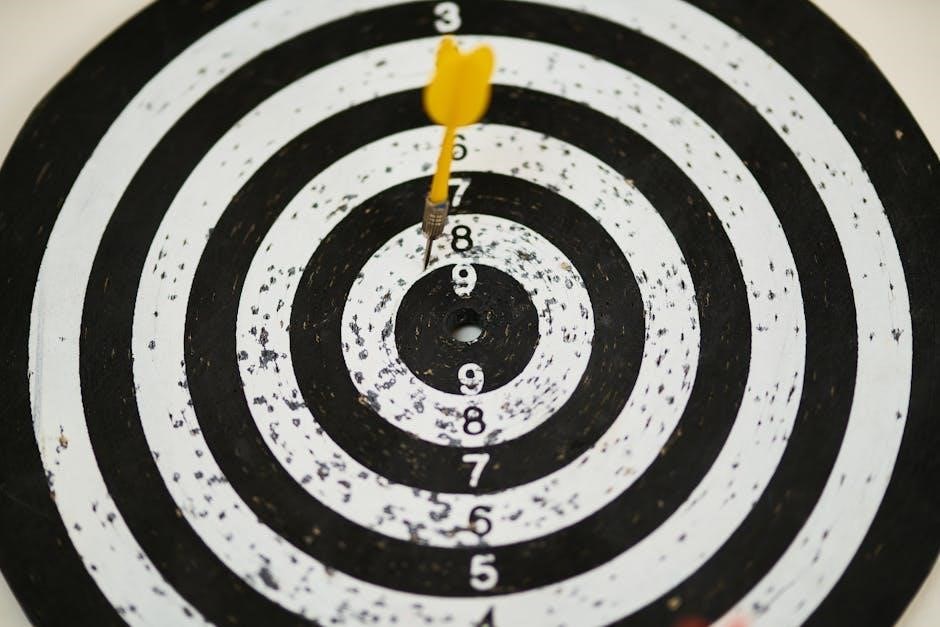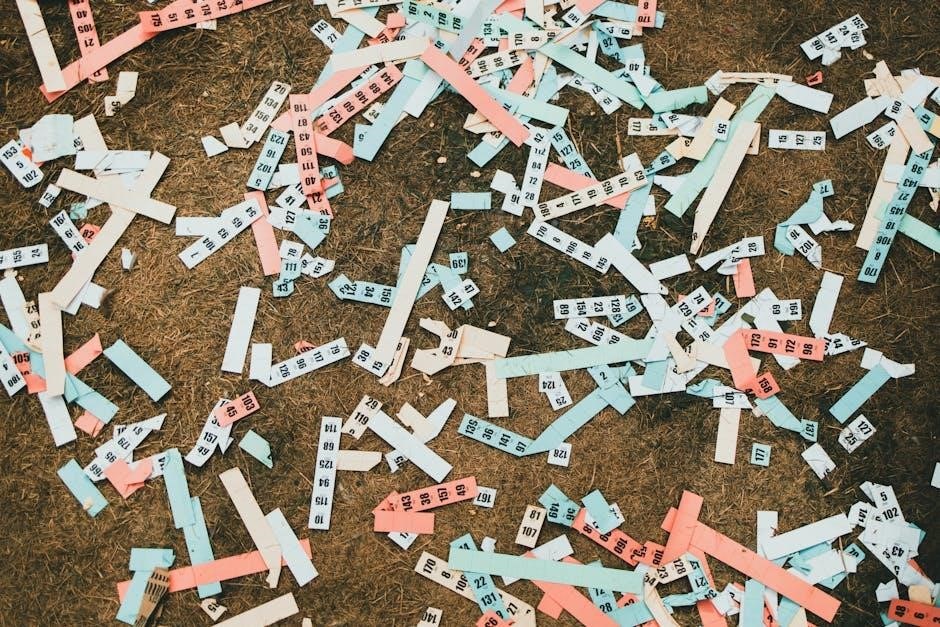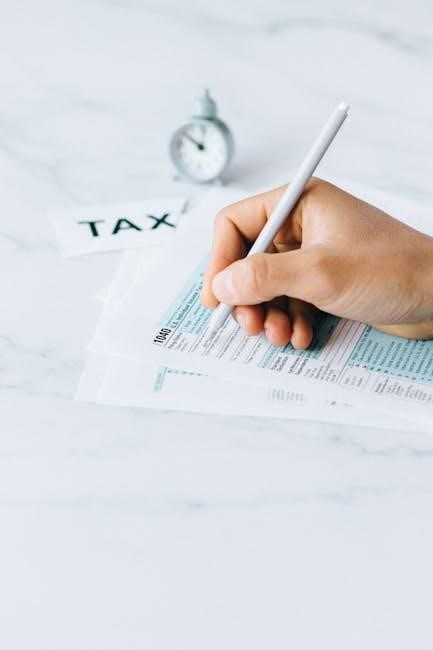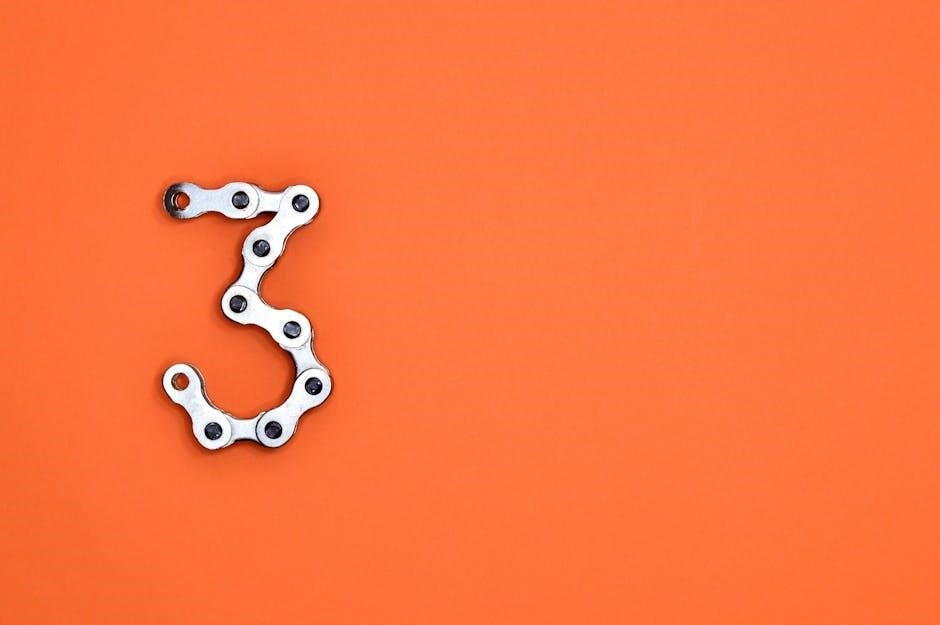Understanding Mixed Numbers and Improper Fractions
Mixed numbers combine whole numbers and proper fractions‚ like 1½. Improper fractions‚ such as 3/2‚ represent values greater than one. Both are essential for precise calculations.
Definition of Mixed Numbers
A mixed number is a mathematical expression that combines a whole number and a proper fraction. For example‚ in the mixed number 1½‚ the “1” represents the whole number‚ and the “½” is the proper fraction. This notation is useful for showing values that are more than one whole but less than the next whole number. Mixed numbers are often used in everyday situations‚ such as cooking or construction‚ where measurements may include whole units and parts of a unit. They provide a clear and concise way to express quantities that are not whole numbers‚ making them easier to understand and work with compared to improper fractions. Properly understanding mixed numbers is essential for various mathematical operations.
Definition of Improper Fractions
An improper fraction is a type of fraction where the numerator (the top number) is greater than or equal to the denominator (the bottom number). For example‚ 3/2‚ 5/4‚ or 7/3 are all improper fractions. This means the value of the fraction is one or greater. Improper fractions are distinct from proper fractions‚ where the numerator is smaller than the denominator. They can be easily converted into mixed numbers by dividing the numerator by the denominator and expressing the remainder as a fraction. For instance‚ 5/4 becomes 1¼ when converted to a mixed number. Improper fractions are fundamental in mathematical operations‚ especially in higher-level mathematics‚ as they simplify calculations involving division and multiplication. Understanding improper fractions is crucial for mastering fraction conversions and real-world applications.
The Importance of Converting Mixed Numbers to Improper Fractions

Converting mixed numbers to improper fractions is essential for simplifying mathematical operations. Improper fractions provide a consistent format‚ making addition‚ subtraction‚ multiplication‚ and division more straightforward. In real-world applications‚ such as cooking or construction‚ improper fractions facilitate precise measurements and scaling. For example‚ converting 1½ cups to 3/2 cups allows for easier recipe adjustments. This conversion also reinforces the understanding of equivalent fractions and enhances math fluency‚ which is crucial for advanced mathematics like algebra. Worksheets often include these exercises to help students master the relationship between mixed numbers and improper fractions‚ ensuring a solid mathematical foundation.

Step-by-Step Conversion Process
To convert a mixed number to an improper fraction‚ multiply the whole number by the denominator‚ then add the numerator. Keep the denominator the same.
How to Convert Mixed Numbers to Improper Fractions
Converting mixed numbers to improper fractions involves a few simple steps. First‚ identify the whole number and the fraction parts of the mixed number. Multiply the whole number by the denominator of the fraction to find the new numerator. Add this result to the original numerator‚ keeping the same denominator. For example‚ to convert 1½‚ multiply 1 (whole number) by 2 (denominator)‚ which equals 2. Add the numerator 1‚ resulting in 3/2. Ensure the fraction cannot be simplified further. This method works for all mixed numbers‚ providing a consistent way to convert to improper fractions. Always double-check calculations to avoid errors. This process is widely used in math worksheets and practice problems to help students master fraction conversions.

Visual Examples of the Conversion Process
Visual examples are essential for understanding how to convert mixed numbers to improper fractions. Start by breaking down the mixed number into its whole number and proper fraction parts. For instance‚ take the mixed number 2¾. First‚ identify the whole number (2) and the proper fraction (¾). Next‚ multiply the whole number by the denominator of the proper fraction: 2 × 4 = 8. Then‚ add the numerator of the proper fraction to this result: 8 + 3 = 11. Finally‚ place this sum over the original denominator to form the improper fraction: 11/4.
This process can be illustrated with diagrams‚ showing the whole number and fraction parts separately before combining them. Such visual aids help students grasp the concept intuitively. Many worksheets‚ like those found in PDF resources‚ include shaded models or number lines to represent the conversion process. For example‚ 1½ becomes 3/2‚ and 3⅔ becomes 11/3. These examples highlight how the whole number and fraction merge into a single improper fraction.

By practicing with these visual examples‚ learners can master the conversion process and apply it to various problems.

Worksheet Design and Structure

A well-organized worksheet ensures clarity and focus. It typically includes a mix of mixed numbers and improper fractions‚ with step-by-step instructions and visual guides for clarity. Problems often progress from simple to complex‚ allowing learners to build confidence. Many worksheets feature answer keys and space for calculations‚ making them practical for independent practice. The design often caters to different grade levels‚ ensuring relevance and engagement for various learners.

Key Features of an Effective Worksheet
An effective worksheet for converting mixed numbers to improper fractions should include clear instructions‚ examples‚ and practice problems. It should offer a variety of exercises‚ such as multiple-choice questions‚ fill-in-the-blanks‚ and open-response problems. Visual aids‚ like fraction bars or diagrams‚ can enhance understanding. The worksheet should cater to different learning levels‚ with problems ranging from simple to complex. Including an answer key is essential for self-assessment. Many worksheets also feature step-by-step solutions to help learners understand the conversion process. Some include interactive elements‚ such as coloring activities‚ to engage students. Customization options allow teachers to tailor the content to specific needs. Overall‚ a well-designed worksheet should promote mastery of the concept through practice and feedback.
Sample Problems and Solutions
A worksheet often includes sample problems to guide students through the conversion process. For example‚ one problem might ask to convert 1¾ into an improper fraction. The solution would involve multiplying the whole number (1) by the denominator (4)‚ adding the numerator (3)‚ and placing the result over the original denominator‚ resulting in 7/4. Another problem might require converting 2⅓‚ which would become 5/3. Solutions are typically provided in a step-by-step format‚ ensuring clarity. This approach helps students understand the method and apply it to similar problems. By practicing with these examples‚ learners gain confidence in their ability to convert mixed numbers to improper fractions accurately. Such structured practice is essential for mastering the concept and preparing for more complex fraction operations.

Common Mistakes to Avoid
One common error is forgetting to multiply the whole number by the denominator before adding the numerator. Students often misplace the resulting value‚ either omitting the whole number or incorrectly placing it over the denominator. Additionally‚ miscalculations during multiplication can lead to incorrect improper fractions. Carefully following each step ensures accuracy.
Typical Errors in Conversion
One common mistake is incorrectly multiplying the whole number by the denominator. For example‚ when converting 2½ to an improper fraction‚ some students might multiply 2 by 5 to get 10‚ then incorrectly add 2‚ resulting in 12/5 instead of the correct 7/2. Another error involves misplacing the whole number‚ where students might place it in the numerator or denominator incorrectly. Additionally‚ miscalculations during multiplication can occur‚ such as multiplying 3 by 4 to get 12 instead of 13 for 3¾. Students also sometimes forget to add the numerator after multiplying‚ leading to missing parts of the improper fraction. These errors highlight the importance of careful step-by-step execution and double-checking work.
Tips for Accurate Conversions
To ensure accurate conversions from mixed numbers to improper fractions‚ start by understanding the components of a mixed number: the whole number and the proper fraction. Always multiply the whole number by the denominator first‚ then add the numerator. For example‚ in 2¾‚ multiply 2 by 4 to get 8‚ then add 3 to obtain 11‚ resulting in 11/4. Use visual aids like fraction bars or models to help grasp the concept. Pay attention to detail to avoid common errors‚ such as misplacing numbers or miscalculating. Practice regularly with worksheets to build confidence and speed. Reviewing mistakes and understanding where you went wrong is crucial for improvement. Linking the process to real-world scenarios‚ like measuring ingredients for a recipe‚ can make the practice more engaging. By following these tips‚ students can master the conversion process effectively.

Real-World Applications
Mixed numbers and improper fractions are essential in daily tasks like cooking‚ where recipes often require precise measurements‚ such as using 1½ cups of flour or adjusting ingredient ratios.
Using Mixed Numbers and Improper Fractions in Everyday Situations
Mixed numbers and improper fractions are practical in various daily activities. In cooking‚ recipes often specify measurements like 2¾ cups of flour or 1½ tablespoons of sugar‚ requiring accurate conversions. DIY projects also benefit‚ as materials might be measured in fractions‚ such as 3½ feet of lumber. Financial calculations‚ like dividing expenses or understanding prices‚ may involve these fractions. Additionally‚ in sports and fitness‚ tracking progress or setting goals can use mixed numbers‚ such as running 5¼ miles. Understanding these concepts enhances problem-solving skills in real-life scenarios‚ making them indispensable tools for everyday tasks.



